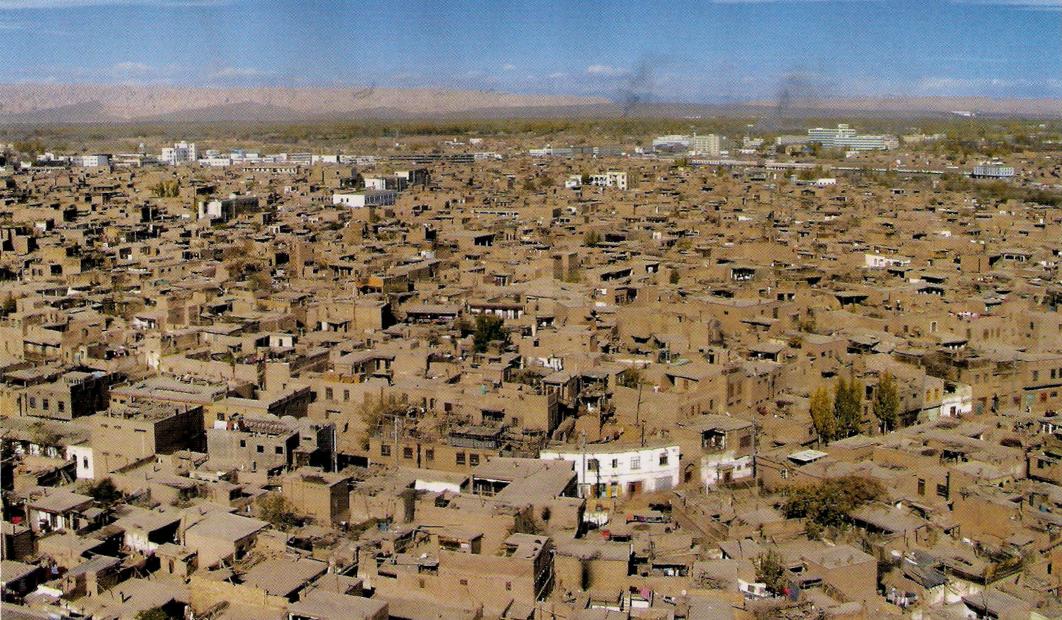This is about convergence.
In 1271, 17- year- old Marco Polo joined his father and
uncle on a voyage to the east to look for broader trade markets. The Polos took
a merchant ship from Venice to the eastern shore of the Mediterranean and by
horse, camel, and sometimes by foot, crossed Syria, Mesopotamia, and Iran. They
crossed the vast desert of Central Asia, traversed over Pamir Highland, and
came to the oasis of Kashgar (today’s Kashi in Xinjiang). In 1275, after three and
a half years they finally arrived at the Yuan capital in China. Some of the
incredible stories of Marco Polo’s journey have been cited in a recent fascinating
book entitled Tracing Marco Polo’s China
Route (China International Press, 2009). In Marco Polo’s footsteps I
endeavor to do the same: tracing my short stay in the west.
I entered Kashgar near the end of a two-week trip on China’s
historic Silk Road. By this point, I had
already hurt my stomach considerably through overeating. I was in a food coma and walked through the old
part of the city like zombie. Still, I remember the sky, the sun, the bricks,
the dirt, and occasionally the children who poked their heads out from the
curtains that provided the only privacy from the outside world. The time is near noon, the atmosphere is
peaceful, however, our nonstop pace more reminiscent to soldiers on a battlefield
than anything serene. Perhaps it was because too many tourists wanted to see
the “Old” part of the city, but our tour guide had to rush us similarly to a
shepherd trying to keep up with a chaotic flock. Everywhere we went we had to
walk through ruins and rubble. Later on (after I had read more about the
cultural and political conflict between the Han and the Ugher) I realize I had
stumbled upon a very controversial city plan: bull doze the old city to rebuild
a better and safer new city in Kashgar.
What I saw before me was a place in the progress of simultaneous
destruction and construction.
Even with my upset stomach, I can shut my eyes to the
discoveries around every corner, I love this part of town and wish I could
spend more time visiting every shop and snapping more pictures of people. Whether this beautiful, charming, and historic
part of the city would survive the seemly unavoidable urban renewal, in my
opinion, lies not in a completely practical, but clear artistic vision: pentimento.
If you prefer clean-cut shapes, brilliant color, modern design, and straight
pathways, go head, rebuild the city and mold it into a perfect model. However,
if you enjoy the layers of history on the walls and hanging off the rooftops, the
organic dwellings, winding streets, then you ultimately choose to repent these
new changes, and instead choose to allow a place to grow in its own bio rhythm. The old city in Kashgar not only represents a way of living but
also involves political power dominance. As an artist, educator, tourist and
world citizen, I really hate to see the old part of the unique life style disappear
in Kashgar or in the world. Please let the old city be, and do no more harm.
My convergence to this old city of Kashgar ends with a photo essay The Veils of Aleppo by photographer Franco Pagetti. As civil war rages around them, residents of Syria’s largest city use colorful sheets to shield their homes and streets from the rifle scopes of snipers. The veils of Aleppo are the final act against human despair in war. I hope whatever the final solution is from the Chinese housing authority that instead of choosing a path of total destruction they instead decide remember those that have come before and to preserve the integrity of the old Kashgar.



